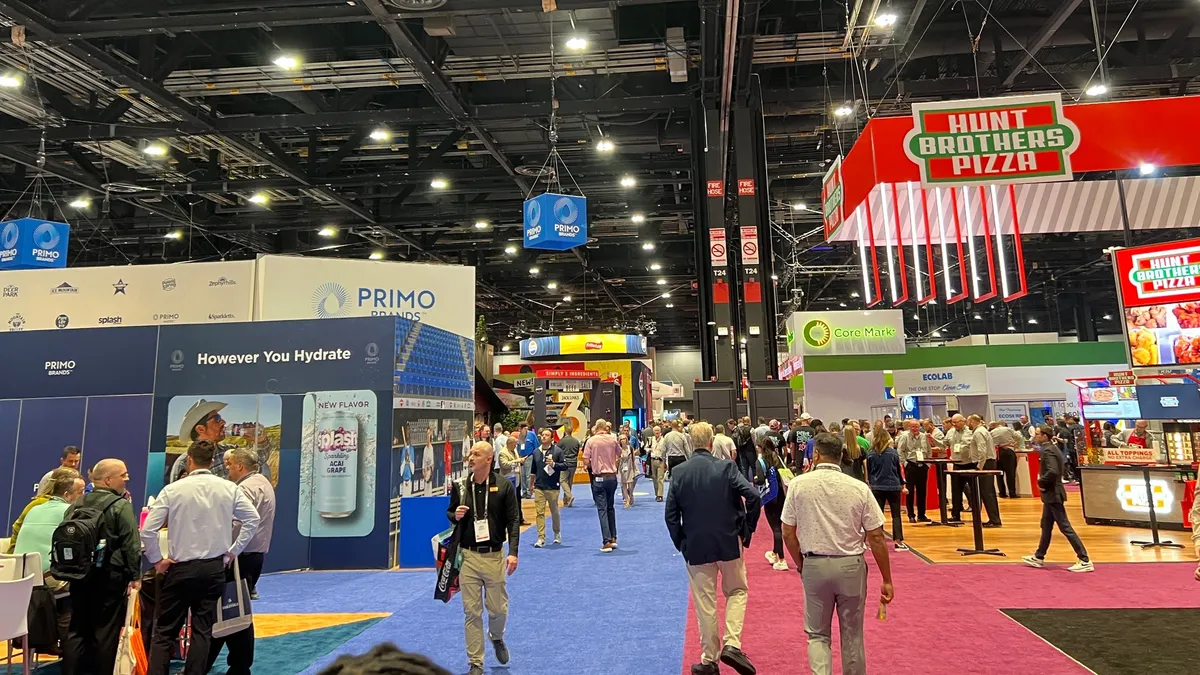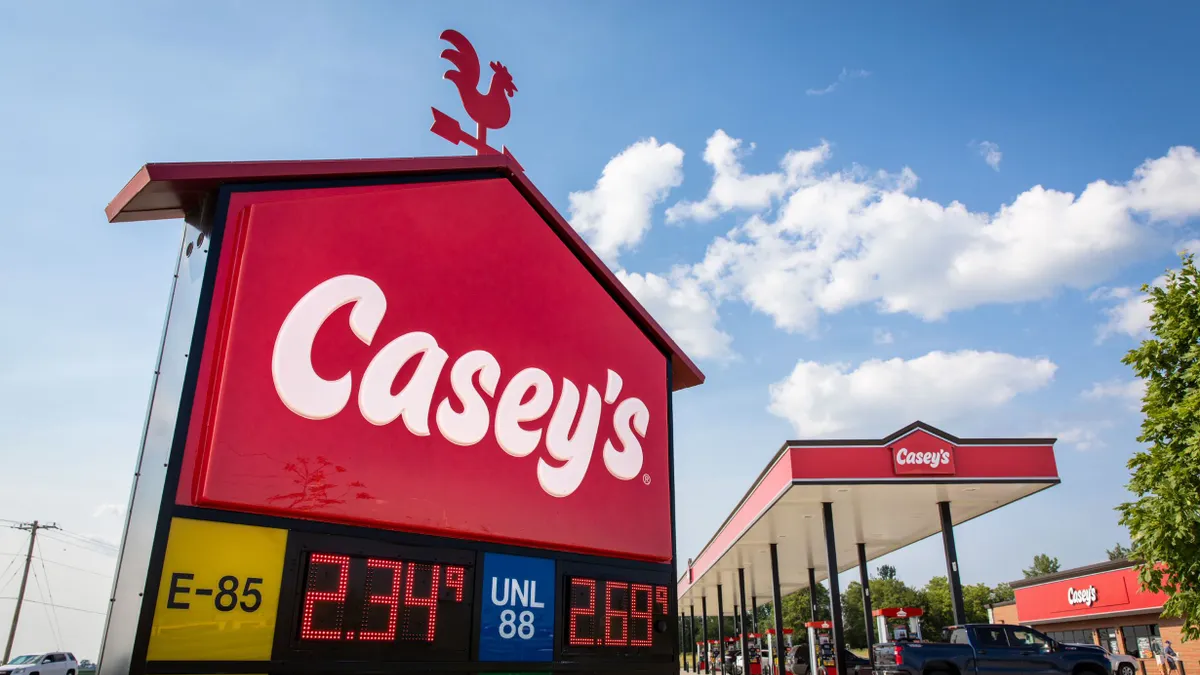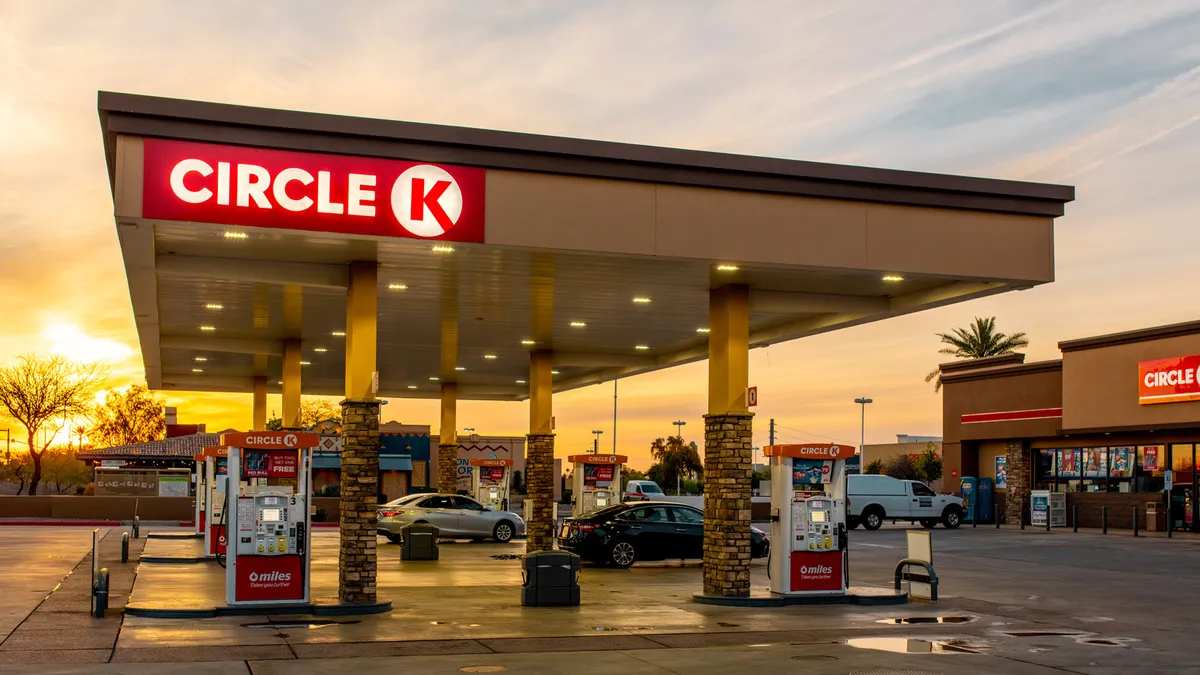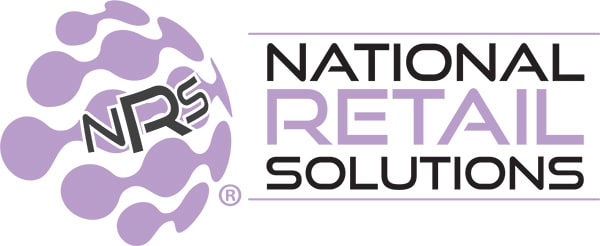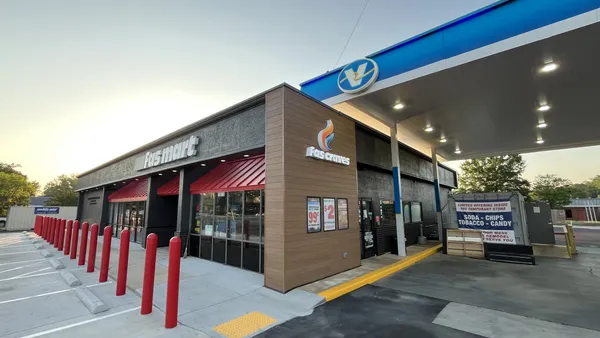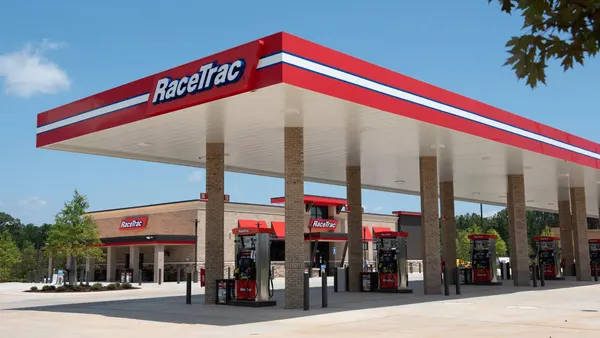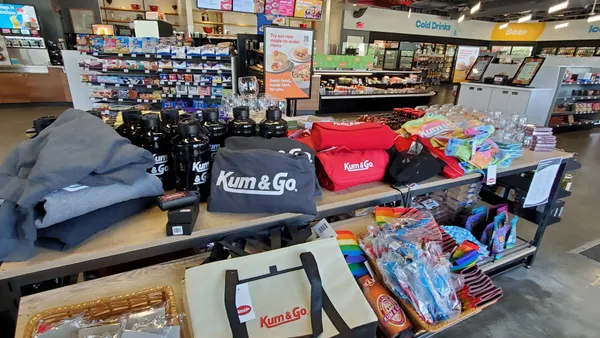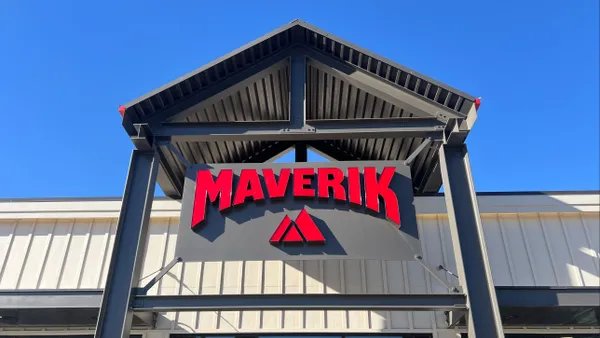C-Store Dive’s third and final day at this year’s NACS show wrapped up on Thursday after tens of thousands of steps taken, numerous actionable insights learned and an unhealthy amount of snacks consumed.
For the second straight day, education sessions on topics like coffee program development, AI use cases and alcohol merchandising piqued our interest, as did the many snacks, candies and greasy foods on the show floor.
Here’s what caught our attention on Day 3 of NACS.
Long live caffeine
Caffeine is no stranger to c-stores. From Cokes to coffee to the entire world of energy drinks, the stimulant comes in a variety of flavors and helps generate significant sales for the industry.
On the NACS Show floor, energy and soda giants were out in full force with new options. C4 shared a new blue raspberry Godzilla-themed drink, while Coca-Cola relaunched classic beverage Mr. Pibb with a new look and a caffeine boost — from 41 to 54 milligrams. Anheuser Busch showed off Phorm, the energy drink it made in conjunction with sports nutrition company 1st Phorm, and clean ingredient energy drink makers like Bloom and King Kongin showed off their flavors.
But for folks looking for more daring takes on the ingredient, the show offered plenty of other options.
MoJo showcased a line of flavored caffeine pouches — think like Zyn tobacco pouches, but with a boost of energy. The pouches offer 50 milligrams of caffeine and come in flavors like sour apple, mint and peach watermelon.
And if you’d prefer to eat your caffeine, Marshawn Lynch’s Beastmode energy cakes let you do just that, with flavors like chocolate and lemon.
Coffee chains are creating headaches for c-stores
Speaking of caffeine, convenience retailers didn’t shy away from discussing their biggest challenge when it comes to coffee: competing with the local and national chains, according to three retailers who spoke on a panel discussion about the classic c-store beverage.
Micah Rupprecht, director of category management for foodservice for Kwik Trip, said that in the Wisconsin-based retailer’s markets, there’s either a local or national coffee chain opening “literally every day up the street” from one of its c-stores.
“They’re able to do a small footprint, small overhead, and they’re able to offer competitive drinks and marketing inside of that footprint,” Rupprecht said. “We’re trying to keep as many cups as we can inside our stores.”

Steve Kapple, senior category manager for dispensed beverages at Casey’s General Stores, said the Iowa retailer has “basically the exact same issue” as Kwik Trip.
“We see the exponential expansion of the drive-thru kiosks and the competitor that's on every corner,” Kapple said.
This challenge also applies to Oxxo in Mexico, where it has tens of thousands of sites, said Ximena Reynoard, the retailer's director of foodservice.
“If you see the price point, they're closer to what we can offer,” Reynoard said of local coffee shops in Mexico. “They have very good quality [coffee] like us, and that's why we need to be aware of them all the time and continue to say [how can we be] different from them?”
Retailers — especially small players — are struggling inside the store
The c-store industry had a down past year when it came to selling products inside the store, Chris Rapanick, managing director of NACS Research, said during his annual state of the industry presentation.
Rapanick shared that inside store operating profits — a figure that excludes fuel-related revenue or expenses — declined about 1.2% between June 2024 and June 2025. If high fuel margins weren’t keeping it above water, the average c-store would lose about $700 or $800 per month, he said.
Additionally, after seeing annual increases of about 7% in recent years, c-store foodservice sales only grew by about 2% over the past year, Rapanick added.
Bottom line: Operators that don’t sell fuel — especially independents that go fuel-less — appear to be in trouble.
“The stores that are selling fuel have grown, and the stores that aren't selling fuel have closed,” he said. “And the main impact on that is on our single store operator.”
International cuisine and flavors are emerging
At past NACS expos, most international flavors appeared in snacks such as Asian seaweed crisps or Tajin-flavored nuts. And while those salty treats didn’t go anywhere, this year’s show had an abundance of other global cuisine on the expo floor.
These included the brand-new Mexican street corn bites and queso dip corn bites from Rich Products; ready-to-eat chicken, barbacoa and pork pouches from Isadora; and beef, pork and chicken tacos from QSR chain Naughty Chile Taqueria.
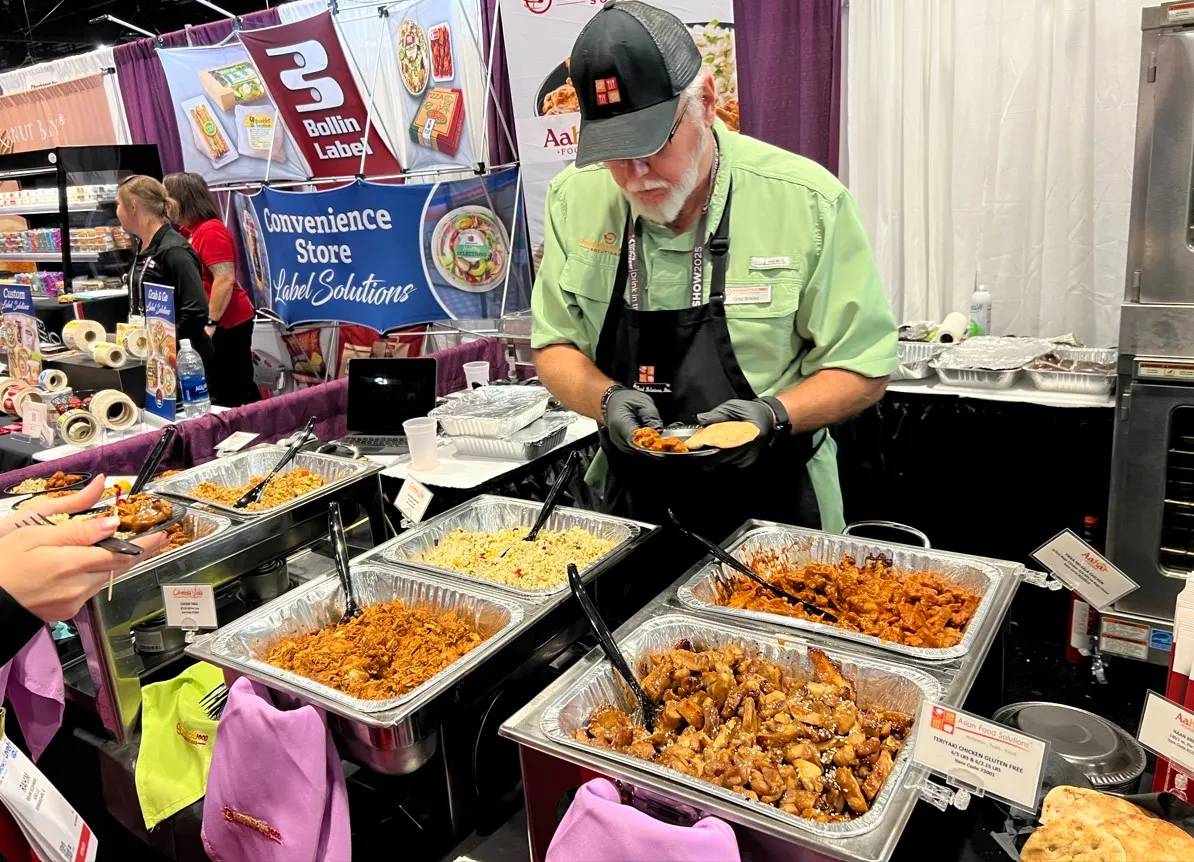
A standout was foodservice company International Food Solutions, which was serving Asian, Mexican and Indian cuisine. Offerings included chicken tinga, General Tso’s chicken, chicken teriyaki and tikka masala chicken.
Lincoln Yee, co-president of the Orlando-based company, told C-Store Dive that although International Food Solutions’ cuisine is mainly found in places such as universities, hospitals and military stations, the company is looking to break into convenience stores.
Crossover alcoholic beverages are a growing opportunity
Over the past three years or so, non-alcoholic beverage brands have been rolling out boozy new concoctions. Simply Lemonade, Arizona Tea, Monster energy drinks and Jarritos are just a few of the labels that have gotten an alcoholic glow-up.
NielsenIQ data shows that sales of these “crossover” drinks have declined close to 11% year over year. But that masks the growing popularity of these beverages, said Kaleigh Theriault, director of beverage alcohol thought leadership with NIQ. The drop, she said during an education session Thursday morning, is mainly due to lower promotional activity and distribution issues that should prove temporary.
The firm’s research shows that crossover brands sell better than traditional canned cocktails. They also appeal to two consumer groups coveted by retailers: Gen Z and Hispanic individuals.
Recently, some of these brands, including Monster Beast and Topo Chico Spiked, have moved into the top 50 sellers among ready-to-drink beverages.
“They are breaking into that space despite being just a fraction of the size of the scale of some of these other brands on a national basis,” said Theriault.
C-stores looking to take advantage of that popularity will need to be patient with brands moving in and out of the space as beverage companies try new options, said Theriault. They also need to make sure they’re clearly separating the alcoholic beverages from their nonalcoholic counterparts. A customer looking to buy a lemonade doesn’t want to be surprised with the boozy version.
It’s time to keep up with AI
AI will play a key role for consumers in the future, said the experts at one of Thursday’s panels — and c-stores will need to make sure they’re keeping up.
“We have to make sure that we're getting ahead of it and we're meeting our customers where they are,” said Christine Loukota, director of strategy and emerging technologies with Circle K, in the tech-focused roundtable.
Customers are increasingly interacting with technology, asking systems like Chat-GPT or a connected car to help make decisions.
“The way technology is evolving, I can be driving, and I can tell my Google Maps, find me the cheapest gas, get me find me the best burger … and it will start to serve up options for where you should go,” Loukota said.
Making sure that all that pertinent information about c-stores is available online — especially from the retailers themselves — will help keep computers from overlooking them in an increasingly competitive world.
“As convenience retailers, we need to make sure that we're participating and that we are showing up on these options that are integrated in this on-the-go model,” noted Loukota.
The fried chicken wars have arrived
Walking the NACS expo floor, you’re never far from the smell of fried chicken. Several companies were vying for attendees’ attention at the show, reflecting just how competitive the space has become.
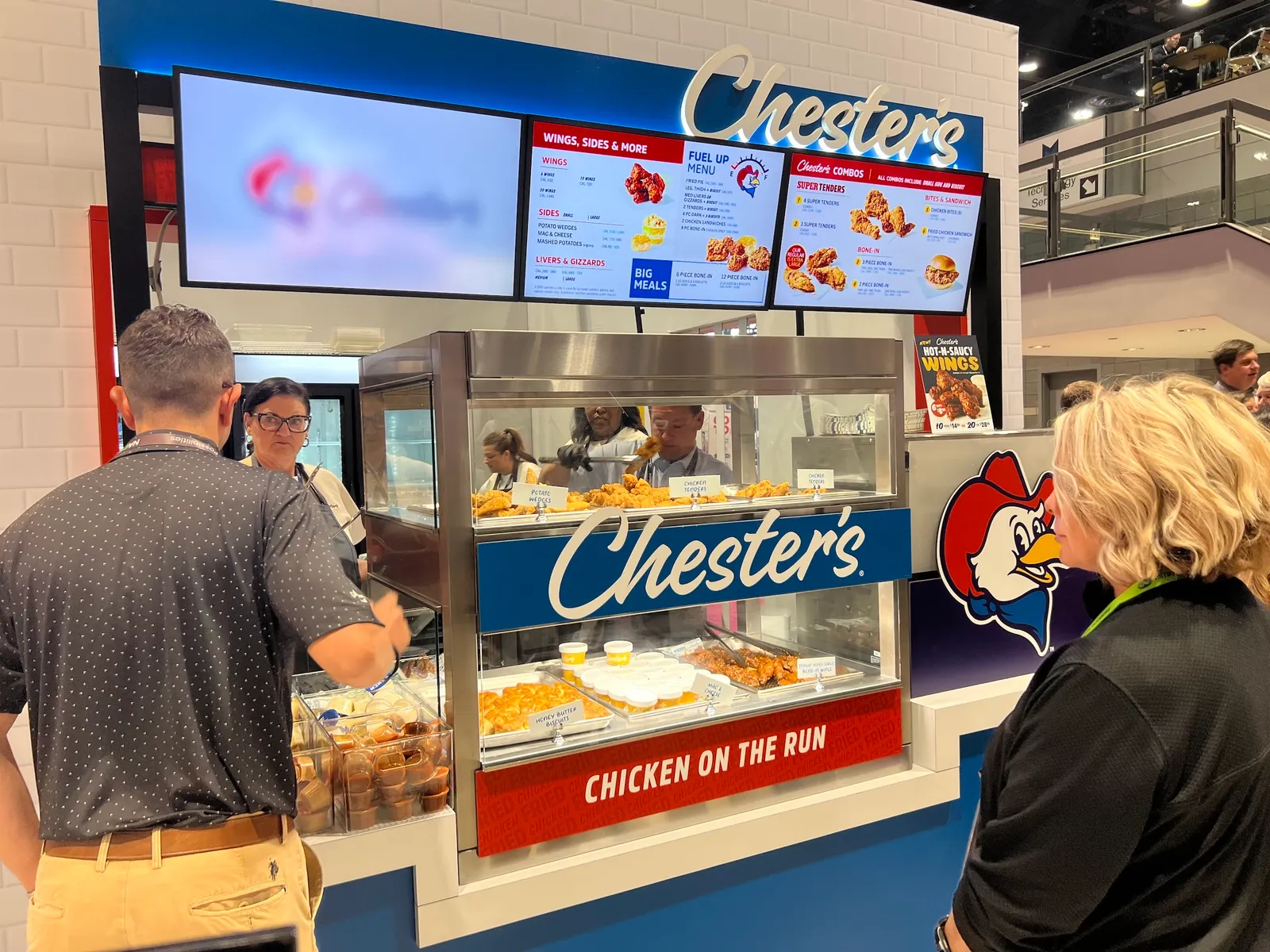
That competition is sparking some notable tech innovations. Chester’s Chicken, which partners with around 1,200 c-stores, showed off a new holding case that uses infrared technology to keep its fried chicken hot and fresh for three hours — three times longer than its traditional case. The new version, which went through 14 iterations during its roughly two-year development period, is also a few thousand dollars cheaper than its predecessor, said William Culpepper, vice president of marketing with Chester’s. It’s currently rolled out to around 20 locations, he noted.
Over at the PFSbrands booth, attendees got a chance to interact with the company’s new ordering kiosks for made-to-order food. PFS, which provides its Champs Chicken to around 450 c-stores, has also come out with new technology that keeps its chicken hot and juicy for longer, a company representative said.
When it comes to c-store fried chicken, Krispy Krunchy Chicken, which is set to open 600 locations this year, appears to rule the roost. But judging by the NACS Show floor, competitors are hot on its heels.
Editor's note: This story was updated to correct the amount of caffeine in the reformulated Mr Pibb.

